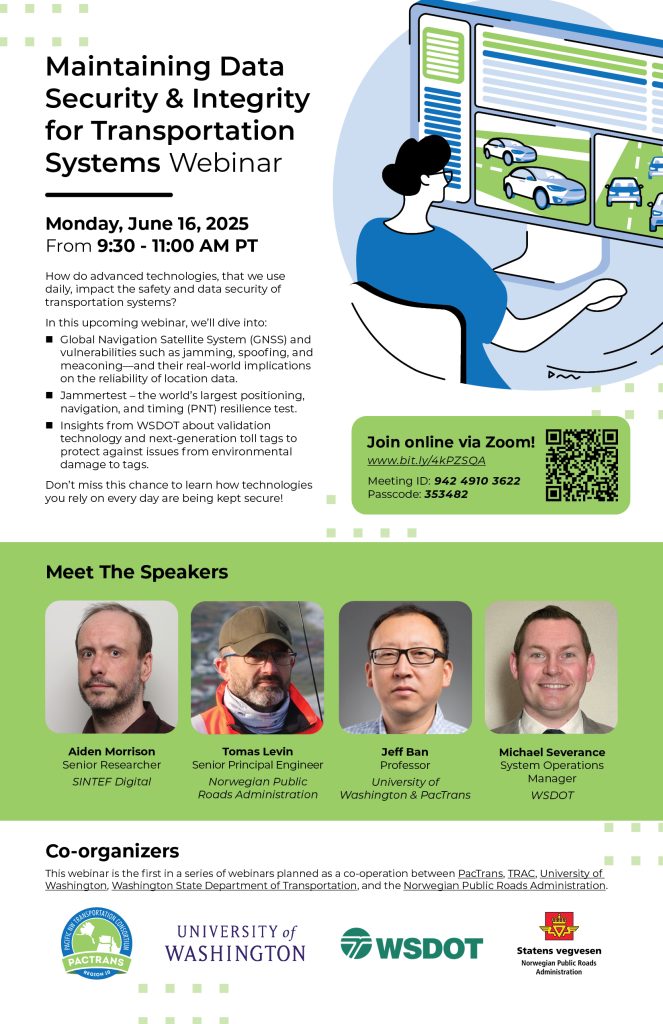PacTrans News
-
July 8, 2025
PacTrans Offers Internship Opportunities in Infrastructure with Support from WSDOT

With support from the Washington State Department of Transportation (WSDOT), PacTrans offered spring internship opportunities to high school and undergraduate students interested in infrastructure-related fields such as transportation, engineering, planning, computer science, and more.
At the end of the three-month long experience, students gathered at the WSDOT Northwest Region Office in Shoreline, WA to present their work with fellow cohort members, mentors, friends and family. Interns were placed in a variety of departments, including Hydraulics, Fish Passage, Traffic Management, Complete Streets, Freight, Geotechnical Engineering, and others.

Throughout the program, students gained hands-on experience and developed both technical and professional skills. Many learned technical skills, such as coding or field work (i.e. monitoring intersections, ropes training). Many also built interpersonal skills like networking and community engagement. During the final presentations, students proudly shared their accomplishments, which included coauthoring a USDOT ADCMS Report and improving local bus routes.
We are proud to have helped students explore the wide range of career paths available in infrastructure. By the end of the internship, students had not only gained valuable workforce experience and built their resumes, but also formed meaningful connections with mentors and peers. We look forward to their bright careers in the future!
-
June 30, 2025
Exploring Spokane’s Streets: Active Transportation & Complete Streets Field Course Highlights
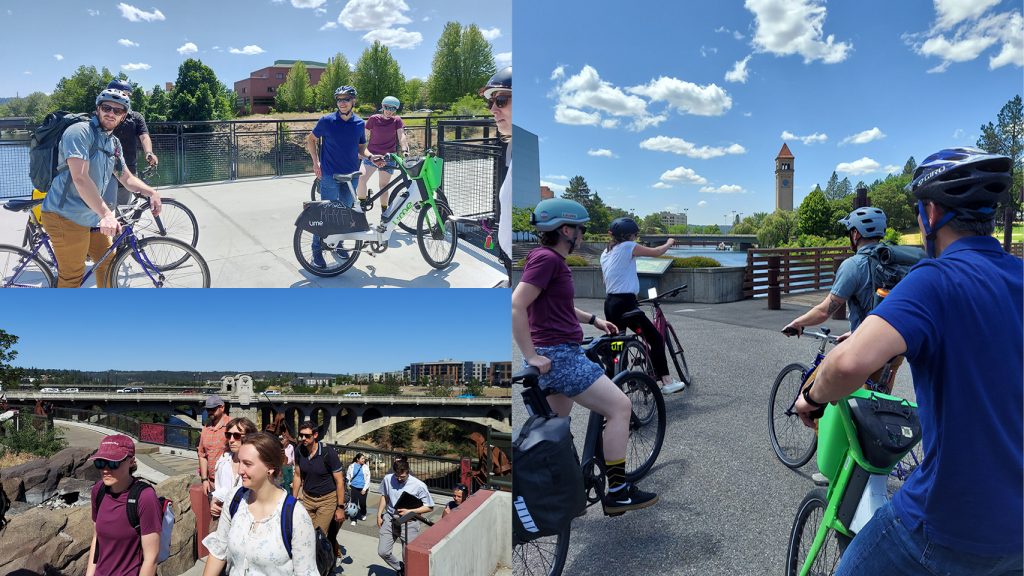
On June 18, 2025, fourteen participants gathered in downtown Spokane, Washington for the Field Course in Active Transportation Safety and Complete Streets Design instructed by transportation engineers, Chris Breiland and Marissa Milam, at Fehr & Peers. After a brief overview of key active transportation design concepts, the group hit the streets for a sunny walking tour of the city’s pedestrian, bike, and public transportation infrastructure projects that had been installed.
Attendees included representatives from the City of Spokane, Parametrix, Spokane Transit, Spokane Regional Transportation Council, WSDOT, as well as a Spokane AT advocate and columnist. The tour sparked lively, insightful discussions as participants shared knowledge from their various perspectives.
Following lunch, the group split into walking and biking teams to explore additional corridors. A common theme throughout the day was the challenge of retrofitting existing infrastructure to improve safety and accessibility for all users—while still accommodating vehicles and truck deliveries.
The bike group explored both new and retrofitted bridges to allow for safer pedestrian and bicycle crossings of both the river and railway tracks, and improved connectivity of the university district with downtown. The day concluded with a group reflection on key takeaways and opportunities for future improvements.
-
June 17, 2025
PacTrans Attends TRB Workforce Development Conference

PacTrans WDI staff attended the TRB National Summit on the Future of the Transportation Workforce in the first week of June in Westminster, Colorado. Melissa Amrhein, Assistant Director of the PacTrans Workforce Development Institute, presented an update on the annual Washington Transportation Camp, sponsored by WSDOT and PacTrans, and hosted by the University of Washington and Washington State University each summer. The camp aims to inspire students to consider career paths in STEM fields related to transportation. Students engage in problem-solving activities that enhance their critical thinking, teamwork, and communication abilities. After participating in the camp, high school students indicated a heightened interest in pursuing degrees in engineering, environmental science, and urban planning.
The other informative sessions at the TRB Workforce conference covered topics such as transportation workforce retention strategies, evaluation of workforce programs, and using AI in the transportation workforce. The conference offered a variety of guest speakers, poster sessions, and breakout sessions where participants shared workforce opportunities and challenges with each other. Our staff walked away with many new insights and workshop ideas. One new workforce development tool shared at the conference is the Agency Capability Building Web Portal. The ABC Portal is a one-stop shop that provides transportation workforce practitioners with easy access to the tools and work products developed through NCHRP Project 20-24(95): Ensuring Essential Capability for the Future Transportation Agency. We look forward to integrating these new resources and insights into our future initiatives to further improve the transportation workforce.
-
June 4, 2025
Join “Maintaining Data Security & Integrity for Transportation Systems” Webinar on June 16!
Join our upcoming webinar “Maintaining Data Security & Integrity for Transportation Systems” to learn about how our daily advanced technologies impact the safety and data security of transportation systems.
Watch online via zoom!
🕤 Monday, June 16, from 9:30 – 11:00 AM PT
🔗 www.bit.ly/4kPZSQA
Meeting passcode found in the attached flyer.
This webinar is the first in a series of webinars planned as a co-operation between PacTrans, TRAC, University of Washington, Washington State Department of Transportation, and the Norwegian Public Roads Administration.
-
May 24, 2025
PacTrans WDI Hosts Workshop to Address Transportation Workforce Challenges in Washington State
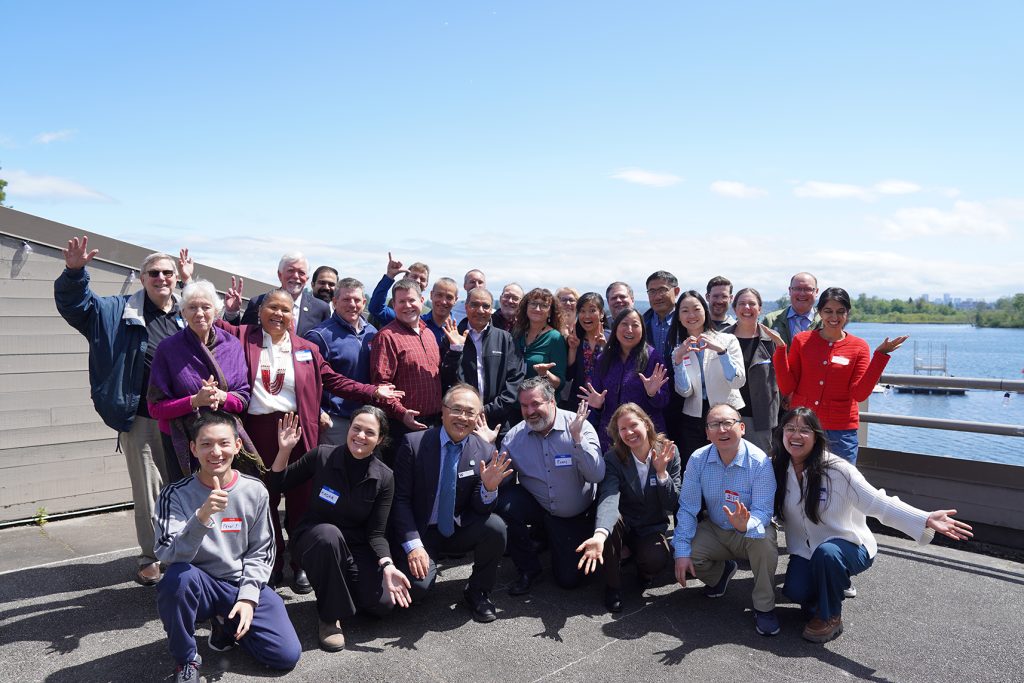
With support from Washington State proviso funding and in partnership with the Washington State Board of Registration for Professional Engineers and Land Surveyors and the Washington State Association of County Engineers, the PacTrans WDI and TRAC have completed a comprehensive engineering pathway study. This study identifies critical workforce challenges facing the state’s transportation sector and proposes both short-term and long-term solutions to address them.
To share the findings and gather feedback from leaders across the transportation sector—including government agencies, private industry, and academic institutions—PacTrans hosted a Transportation Workforce Development Workshop on May 30, 2025, at the University of Washington’s Waterfront Activities Center.
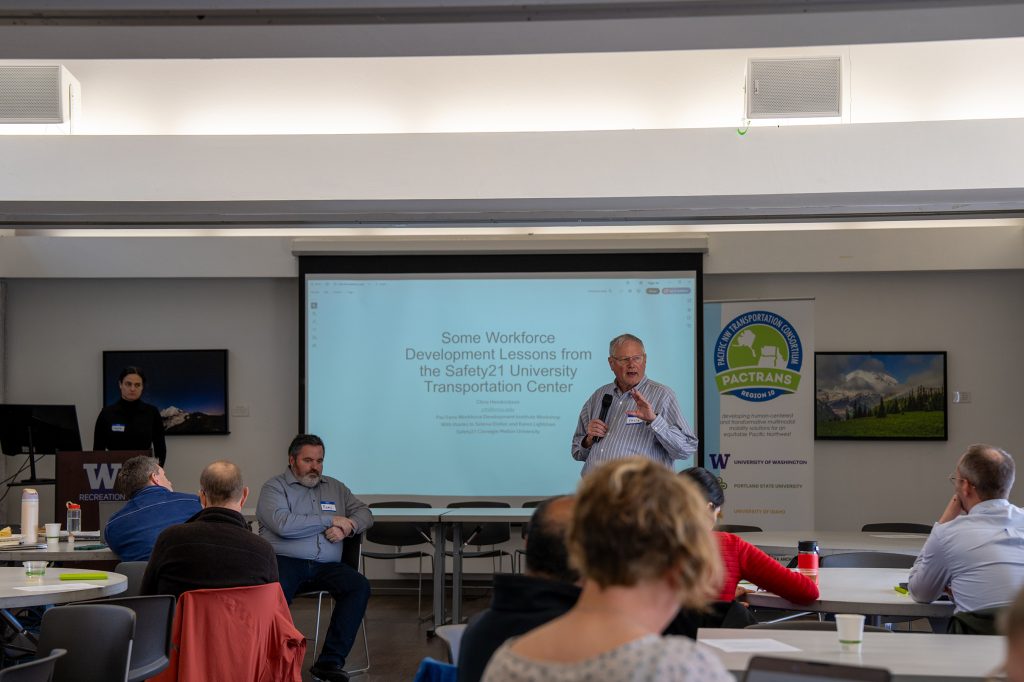
The workshop brought together approximately 40 participants who contributed their perspectives on the state of the transportation workforce pipeline and collaborated on strategies for building a resilient and future-ready workforce. The event featured a keynote address by Professor Chris Hendrickson of Carnegie Mellon University, a nationally recognized expert in transportation infrastructure and workforce development.
The event also feature two panels:
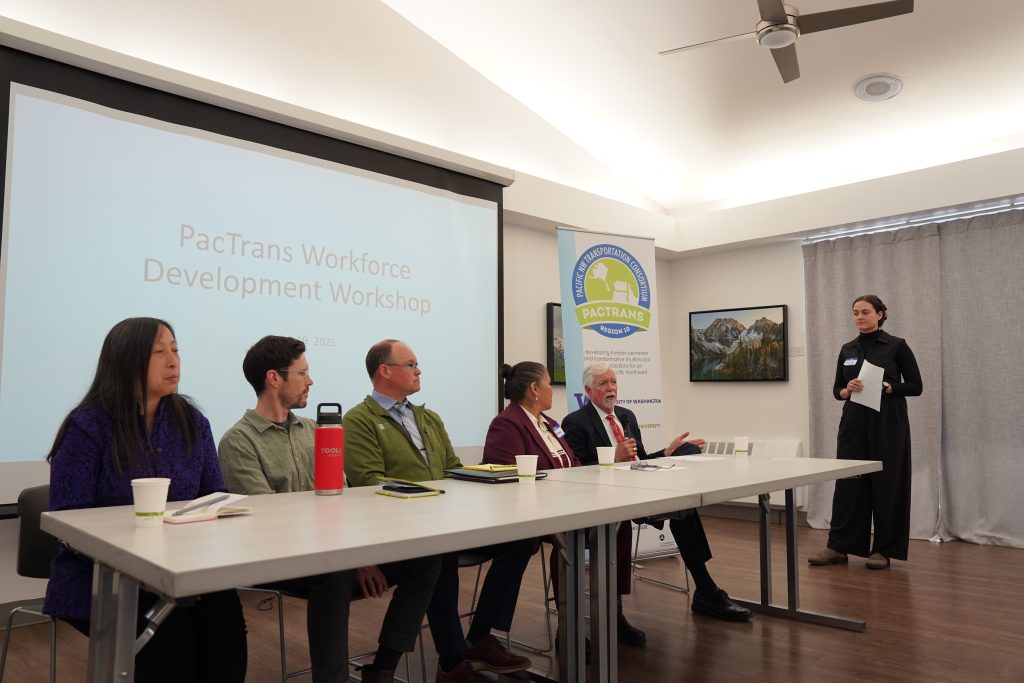
Current Challenges and Short-Term Solutions
-
Roger Millar, Former Secretary, Washington State Department of Transportation (WSDOT)
-
Janice Zahn, Washington State House of Representatives and Port of Seattle Chief Engineer
-
Axel Swanson, Washington State Association of County Engineers Managing Director
-
HollyAnna DeCoteau LittleBull, WSP Senior Transportation Planner & Tribal Liaison
-
Michael Houston, PE, AICP, Toole Design Seattle Transportation Engineering Group Manager
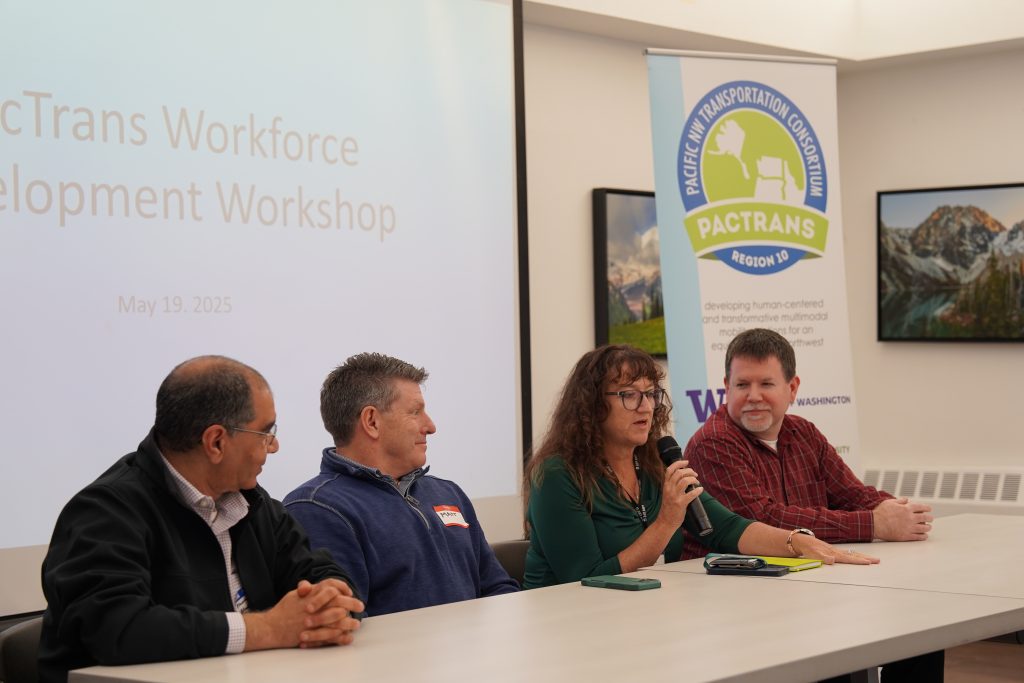
How to Move Forward and Long-Term Solutions
-
Cina Fisher, Alaska DOT Training & LTAP Director
-
Matthew Neeley, P.E., WSDOT State Traffic Systems Development Engineer
- Matthew Enders, Washington State LTAP Center
-
Ahmed Abdel-Rahim, Professor of Civil and Environmental Engineering, University of Idaho and PacTrans Associate Director
Panelists shared their experiences and emphasized the importance of partnerships, innovation in education and training, and fairness in recruitment and career development.
The workshop was inspiring, with participants offering thoughtful insights and feedback that will inform next steps in workforce planning and policy implementation. PacTrans extend their sincere thanks to all speakers, panelists, and attendees for making this event a success, and to the dedicated staff who worked behind the scenes to ensure a seamless and engaging experience.
As PacTrans WDI and TRAC continue to drive workforce initiatives forward, this collaboration sets a strong foundation for addressing the workforce challenges in the PNW’s transportation sector.
-

